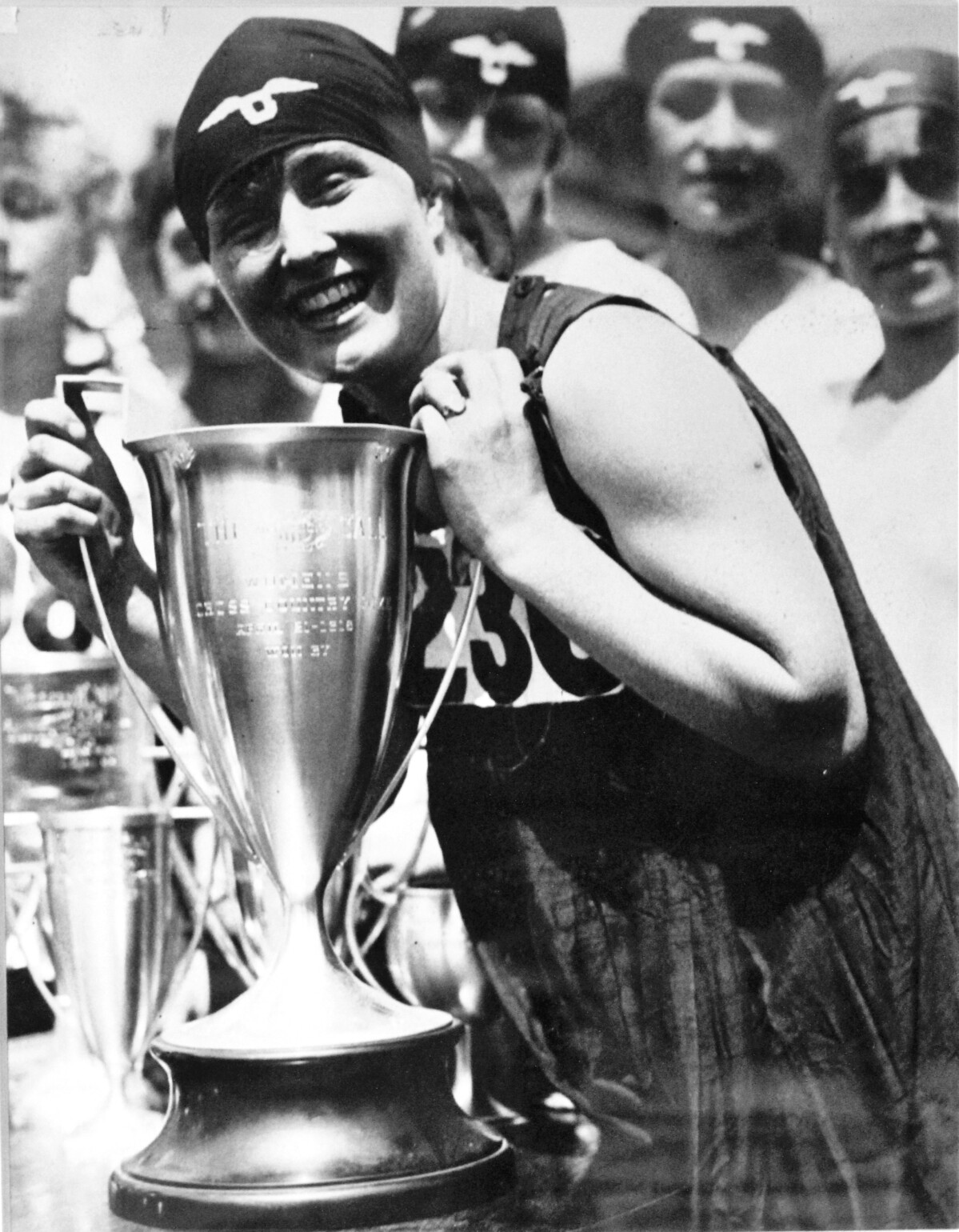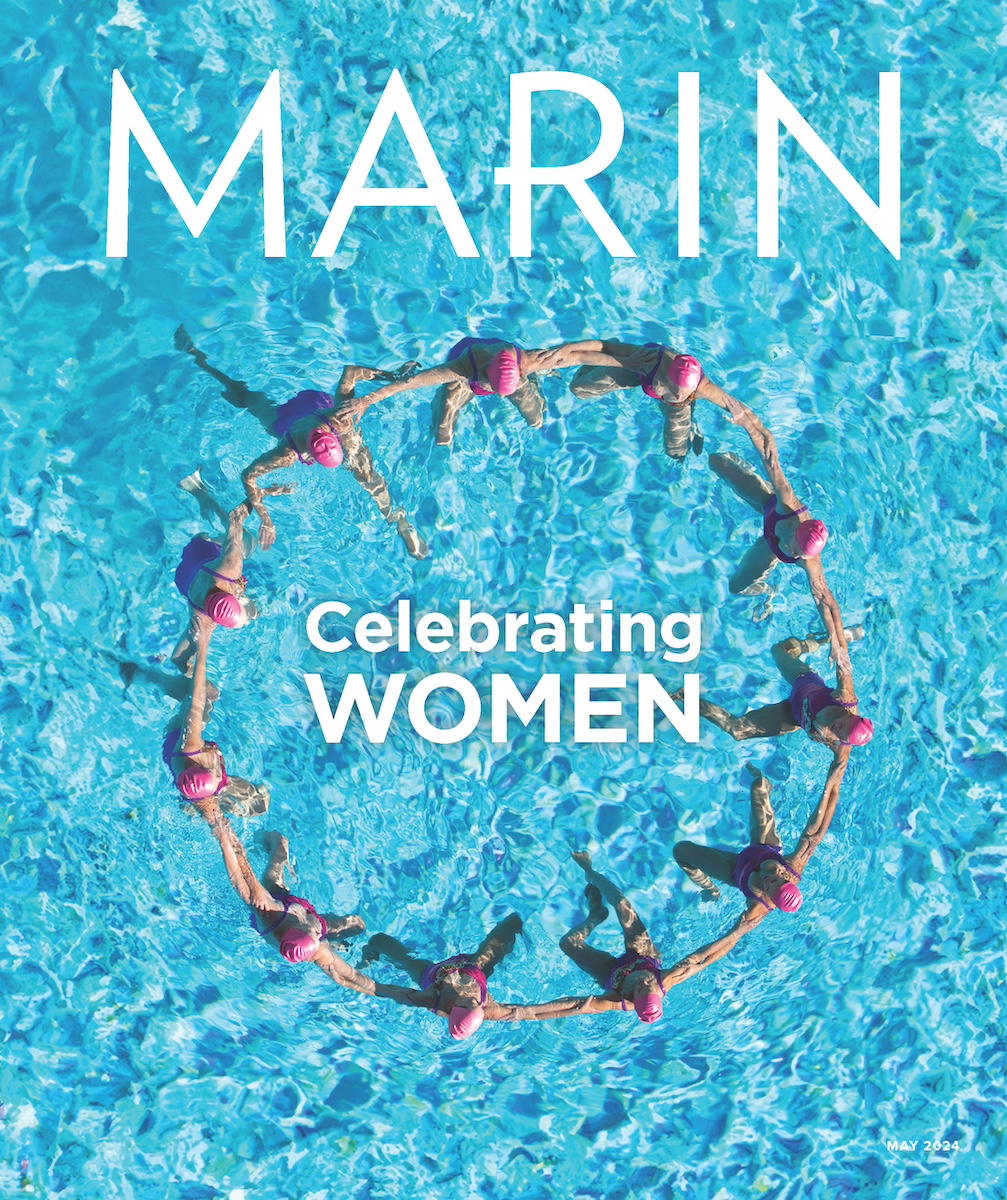
This year, the Dipsea — Marin’s world famous foot race — starts in downtown Mill Valley on Sunday, June 9th, heads over Mt. Tamalpais then plunges almost into the surf before finishing in Stinson Beach. Organizers say 1,500 runners will participate with nearly a third of them being women. Yet, it hasn’t always been this way. At its beginning in 1905, women were not allowed to compete in the Dipsea.
Back then the nation’s Amateur Athletic Union (AAU) maintained long distance running was “dangerous to a woman’s reproductive health.” And the resulting ban was in effect in 1918, when one George James, aka, “The Sultan of the Dipsea,” organized the first All Women’s Dipsea Hike. It was labeled a “hike” to circumvent the AAU’s rule barring women from long distance races. The first “hike” attracted 307 entrants; the winner being 19-year-old Edith Hickman shown in the accompanying photo with a trophy she later donated to a World War II scrap metal drive. Although the hike/race attracted 5,000 spectators (more fans than the men’s race did), it lasted only five years — until 1922. It was canceled, according to historian Barry Spitz, author of Dipsea, The Greatest Race, again due to “public pressures, this time from local church groups claiming that strenuous running was somehow immoral.”
And the Dipsea’s “No Women” ban lasted until 1971. However, in the 40 years following the rule’s abolishment — thanks to a byzantine array of handicaps and head starts — nearly half the Dipsea winners have been women. Among them is Reilly Johnson; a 62-pound, eight-year-old girl won the 2010 Dipsea by edging out Melody-Anne Schultze, a grandmother who had already twice won the event. And Shirley Matson, a veteran Marin runner then in her early 60s, was the overall winner of the 2001, 2002 and 2004 Dipseas. Again, don’t forget the Dipsea’s intricate system of handicapping — which applies to men and women alike.
Possibly best to leave final words to George James, 1918’s “Sultan of the Dipsea”:
“From my own observation, I believe that a woman, equally trained and in the same physical condition as a man, is more game, more tenacious and has greater endurance.”


